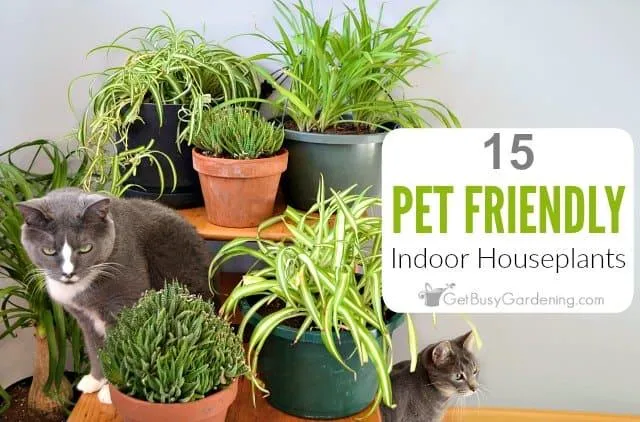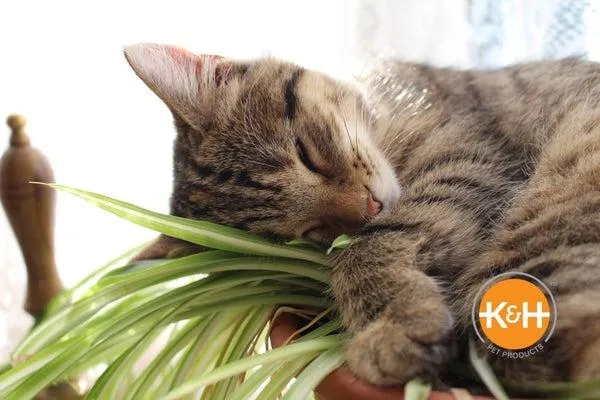Houseplants That Won’t Hurt Your Pets
If you have furry friends at home, you may be wondering which houseplants are safe to have around dogs and cats. From my own experience owning pets, I know how tempting it can be to fill your space with greenery. However, it’s important to choose plants carefully to avoid any potential health issues for your animals. In this article, I’ll discuss some top houseplant picks that are generally considered non-toxic for pets.
Snake Plants
A great low-maintenance option is the snake plant, or mother-in-law’s tongue. Snake plants are tough as nails – they can go awhile between waterings and tolerate low light conditions well. They’re also very pet-friendly. The sword-shaped leaves of snake plants contain compounds called saponins that can cause mild mouth irritation for pets if ingested in large quantities. However, to actually get sick from a snake plant, an animal would basically have to chomp down the entire plant. These plants are basically harmless to have around pets.
Peace Lilies
Peace lilies are another beautiful, hardy houseplant choice that poses little risk to animals. While the peace lily can cause minor mouth irritation if eaten, it would take a significant amount of ingestion to cause anything more than upset stomach or vomiting in pets. I like peace lilies because in addition to being non-toxic, their trumpet-shaped white blooms add a nice pop of color. As with snake plants, you’d pretty much have to force-feed a whole peace lily to a pet for it to experience anything worse than an upset tummy.
Chinese Evergreen
A stunning foliage plant that’s also considered safe is the Chinese evergreen. Unlike some other houseplants, Chinese evergreens contain no toxins that could harm pets if nibbled on. In addition, its waxy, thick leaves make it an unattractive plant for animals to chew in the first place. Plus, the beautiful large leaves come in a variety of colors like green, cream and burgundy. So you get a bold look with the peace of mind of a pet-safe choice.
Succulents
Succulents like echeveria, haworthia and sedum varieties are another great, low-maintenance choice. Their thick, fleshy leaves and stems aren’t particularly appealing to chew. And since most succulents naturally have few active toxins, they tend to pose minimal risk even if eaten. Now that being said, I’ve totally seen cats get curious about succulents and try to take a nibble before. But it’s never amounted to anything serious from my experience. Succulents are about as pet-friendly as houseplants get in my book.

English Ivy
For a trailing or climbing vine option, English ivy makes the safest list. Its dark green, three-lobed leaves aren’t enticing for pets to nibble on. Plus, its berries are unappetizing and most animals won’t ingest more than a couple by accident. English ivy may cause mild stomach upset but is generally regarded as non-toxic for cats and dogs. It’s an enduring choice that looks great trained up a bookshelf or along a balcony rail. Just watch out if you have a plant-grazing bunny or rodent pet!
Pothos
This easy-care trailing vine is basically indestructible too. Commonly known as devil’s ivy, golden pothos thrives whether hanging in a basket, trained along a wall, or used as a table plant. Its heart-shaped leaves are tough and waxy, not at all appetizing for animals. Even if a curious pet decided to taste one, pothos isn’t hazardous. Its toxins require a ridiculous amount of ingestion to cause harm. Pothos makes an excellent choice when you want the look of greenery without the pet safety worries.
Plants to Avoid
While those plants mentioned above are generally acknowledged as safe for pets, there are some common houseplants owners should be wary of. Here are a few plants to steer clear of or place safely out of reach if you have furry family members:
Lilies
All types of lilies, including Easter lilies, calla lilies and day lilies, should be completely avoided if cats are present. This is because even ingesting small amounts of certain parts of the lily plant can potentially cause kidney failure in cats. It’s just not worth taking any chance here, so lilies don’t belong in pet homes.
Aloe Vera
Aloe vera gel is commonly used topically for minor burns and skin irritations in humans. However, if ingested by pets it can cause gastrointestinal upset and potentially even organ damage if a large enough amount is swallowed. Its toxins are too potent to risk having around curious cats and dogs.

Dieffenbachia
Also called dumb cane, dieffenbachia contains calcium oxalate raphides throughout its leaves and stems. These needle-like calcium crystals can cause painful mouth irritation, swelling and even airway restriction if chewed by pets. Dieffenbachia should definitely be viewed as an off-limits plant for animal homes.
Foxglove
While its bell-shaped flowers add whimsy to gardens, foxglove is highly poisonous to pets as well as people if eaten. Ingesting any part of the foxglove plant carries risks of abnormal heart rhythm and even heart failure. There’s no safe way to have this plant around animals.
When selecting houseplants, keep in mind curious pets may view plants as potential nibbles. Rather than risk potential health issues, choose from the “generally safe” options above or keep all plant types well out of pets’ reach. I hope this guide helps you balance your indoor garden’s looks with furry family members’ safety. Let me know if you have any other plant questions!
Plants Safe for Pets
| Plant | Toxicity | Safety Details |
|---|---|---|
| Peace Lily | Non-Toxic | Large white flowers are attractive but not tempting for pets to chew. Safe for cats and dogs. |
| Snake Plant | Non-Toxic | Tall stiff leaves are unappealing to pets. Filter toxins from the air. Cat and dog safe. |
| Pothos | Low Toxicity | Pet safe when kept out of reach of chewing. May cause mild upset if eaten. Tolerates low and medium light. |
| Chinese Evergreen | Low Toxicity | Colorful variegated leaves are unappealing to pets. Safe for dogs and cats when kept higher or out of reach. |
| ZZ Plant | Non-Toxic | Dense foliage deters pets from accessing. Filters toxins and delivers oxygen at night. Simple care. |
FAQ
-
Is it ok for my pet to be around houseplants?
Most houseplants are safe for dogs and cats to be around. However, there are some plants that can cause issues if ingested. Always do your research to make sure any plants in your home won’t harm your furry friends!

-
Which common houseplants should I avoid?
Plants like lilies, aloe, and philodendron are toxic to pets and can make them pretty sick. It’s best not to have these sorts of plants where pets can access them. Even if they don’t eat the plant, some can irritate skin upon contact. Play it safe by keeping riskier plants out of paw’s reach!
-
Is it ok if my pet nibbles on plants?
Generally speaking, letting pets nibble or chew on houseplants is not a good idea. While many plants are harmless, some contain toxins that can hurt pets even in small amounts. It’s best to do research first and remove any plants that could cause issues if ingested from areas your pets spend time in.
-
How can I pet-proof my plants?
There are a few things you can try to discourage plant nibbling and keep plants from your critters. Place the plants high up or behind barriers. Use hot sauce or citrus scents around the base which pets dislike. You can also try aluminum foil or double-sided sticky tape on soil – some pets won’t want to touch it.
-
Are any plants beneficial for pets?
Surprisingly, some plants can actually be good for dogs and cats! Certain aromatic plants like lavender may help soothe nervous pets. Meanwhile, some edible herbs like parsley are nutritious in moderation. Always check with your vet before feeding any plant material to be safe. Perhaps try growing some “pet-safe” greenery as natural enrichment.
-
What should I do if my pet eats a toxic plant?
If you notice your pet chewing on or swallowing any part of a poisonous plant, it’s best to seek veterinary help right away. Contact their office or an animal poison control hotline for guidance. Signs of plant toxicity in pets can vary but may include vomiting, diarrhea, tremors or dilated pupils. The sooner they get checked out, the better their chances of a quick recovery. Don’t hesitate to get professional aid in such cases.

